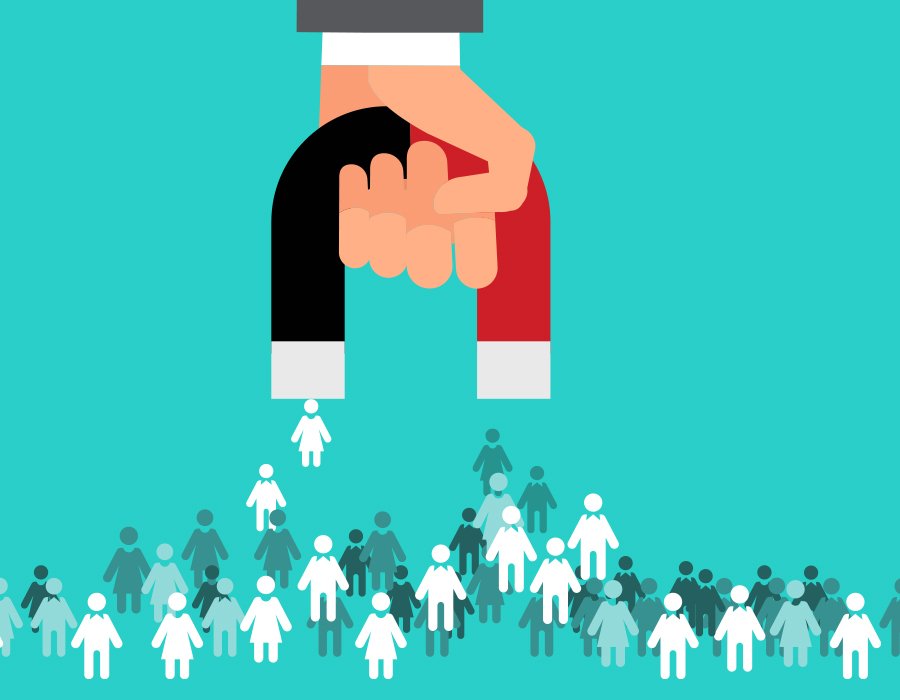Psychological Safety Part 2: What are the 6 Key Benefits?
“Psychological safety at work doesn’t mean that everybody is nice all the time. It means that you embrace the conflict and you speak up, knowing that your team has your back, and you have their backs.”
David Altman, Center For Creative Leadership, COO
In part one of this 4-part series, we outlined why psychological safety really matters in organizations, and we revealed the potentially catastrophic impact of non psychologically safe workplaces.
In this blog, we will review how psychological safety empowers inclusivity, authenticity and engagement and how that impacts your organization.
Here are the 6 key benefits of psychological safety in organizations:
#1 Enhances Employee Engagement
When employees are not fully engaged, the organization loses the opportunity to leverage the individual strengths and combined talents of their employees and teams. As it is often said, the biggest waste in organizations is human capital.
As we discussed in part I of this series, Gallup defines employee engagement, not as employee happiness, but specifically as “the involvement and enthusiasm of employees in their work and workplace.” Are employees going through the motions or are they enthusiastic to contribute their best work for the best outcomes of their organization?
Sadly only 35% of US employees are engaged and 15% are actively disengaged. What does this mean? The data for engagement can be summarized in this way: If you have a crew of 20 rowing a boat: 7 are rowing with enthusiasm and investment in the outcome, 10 are going through the motions without engagement in the effort or outcome, and 3 are actively trying to sink the boat.
What impact do you see this having on an organization?
Extensive gallup research reveals that employee engagement is linked to 11 performance outcomes:
Customer loyalty/engagement
profitability
productivity
turnover (for high and low turnover organizations)
safety incidents
shrinkage (theft)
absenteeism
patient safety incidents
quality (defects)
wellbeing (net thriving employees)
organizational citizenship (participation)
Pause for a moment to consider this list. In which of these 11 categories could your organization use the most help? What impact would improvement in these areas have on your organization?
The key drivers of engagement that Gallup has identified are purpose, development, a caring manager, ongoing conversations and a focus on strengths.
Diving deeper, Gallup has identified 12 Elements that create employee engagement. The most important element is that employees have the opportunity to contribute their strengths every day.
This is why our psychological safety program is rooted in strengths-based psychology. To actually create a psychologically safe performance-based workplace, employees need to know and use their strengths and learn the importance of Interdependent Communicate™, a pillar of all our developmental programs.
#2 Fosters Diversity, Inclusion and Belonging
Dr. Amy Edmonson describes how the terms DIB (Diversity, Inclusion, Belonging) as different but interrelated ranging form the objective (Diversity = workforce diversity) to the highly subjective (Belonging = Do I feel I belong?) with Inclusion lying between objective and subjective.
Inclusion is most likely to be experienced when a workplace has high psychological safety.
Dr Edmonson goes on to say that while Diversity can be achieved via deliberate hiring practices, inclusion and belonging are not automatic outcomes. For example, if employees do not feel included in discussions and decisions, or they do not have the ability to contribute their strengths, they may not feel included. As another example, if there is a lack of diversity in top leadership, a feeling of belonging may be lacking.
On a final note, Dr Edmonson finds that psychological safety is particularly critical in workplaces that are cognitively and emotionally challenging such as health care delivery and high tech. True psychological safety starts with objective diversity, deliberately creates inclusion, and necessitates that people subjectively feel that they belong, regardless of “race, gender, sexual orientation or cultural heritage.”
Have you considered the difference between diversity practices and feelings of belonging? Do you know if you employees are feeling included, meaning they feel empowered to bring their greatest talents to the organization every day? Or are they potentially holding back critical skills such as risk assessments, futuristic thinking, strategic ways to work more efficiently, or practical practices to boost customer service? Research informs us that only 35% of employees are willingly and enthusiastically working for the organization’s goals.
#3 Creates Trust Leading to Creativity, Courage and Innovation
Psychological safety drives change and innovation, helps individuals and teams make higher-quality decisions, and drives tasks forward.
When employees feel psychologically safe, they are more likely to trust their colleagues and managers, resulting in improved communication and collaboration.
Interdependence is practiced in strengths-based performance-driven cultures where all employees contribute their strengths and mitigate their weaknesses effectively.
Interdependence fuels collaborative creativity, courage, and innovation and helps teams make higher-quality decisions with higher-quality outcomes.
If an organization has achieved states of Diversity, Inclusion and Belonging, employees are also empowered to contribute their unique perspectives, gifts and talents. It is in intentionally igniting and developing individual talents that all employees’ gifts are maximized, creativity is at its highest potential and new ideas drive innovation.
The stunning statistic of only 35% of US employees being engaged means that creativity and innovation is being totally squandered. The truth is that no one, not even the best leaders in the world, have more top strengths than any other person. This means that for an organization to flourish, everyone must lend their unique talents.
What do you imagine happens when 65% of employees are not contributing their gifts? Strengths gifts include the ability to impact customer service, innovation, efficiency, strategy, risk assessment, team cohesion, communication and so much more.
How might releasing the unique talents of even an extra 10% of your workforce impact your organization?
#4 Improved Employee Wellbeing
Psychological safety impacts individual and organizational wellbeing. Think for a moment: For the past week, you have experienced restless sleep, you have been eating in a way that makes you feel lethargic and foggy, you are recognizing symptoms of increased stress, and you have been largely sedentary. How is this impacting your work performance? Your ability to communicate effectively? Your emotions and ability to connect and relate to others?
We are an integrated entity and anything that impacts our physical, psychological or emotional wellbeing will impact every other area of our lives and the lives of those we interact with. Now imagine the above scenario as it goes on for a month or a year or for many years. Now what would the impact be?
Psychologically unsafe workplaces are described as “stressful” “exhausting” and even “abusive.” Of course we all acknowledge that a physically unsafe workplace would impact our wellbeing. And now we are recognizing that psychological safety also has an impact on our employees. Feeling that we do not belong, feeling judged at work, feeling marginalized, feeling dismissed, feeling unappreciated, feeling misunderstood - these are feelings employees report to us frequently. Over time, these feelings can manifest as declining wellbeing, inducing stress, poor sleep, disengagement, mood shifts, and poor behavioral habits.
Research shows us that wellbeing is a key antidote to burnout. Do you see the critical need for psychological safety and wellbeing programs at your organization? How do you imagine this combination of training might impact your organization?
This once again links back to strengths, DEIBA, and engagement as these are interrelated. Employees need to contribute their gifts, experience appreciation and inclusion, and maintain wellbeing to feel engaged. And engagement leads to performance and positive organizational impact. Do you really want to lead a team where more than half of your rowers are going through the motions - not contributing to forward progress - and some may even be trying to sabotage the vessel?
Employee Retention and Psychological Safety is symbiotic.
#5 Higher Retention Rates
According to Fortune, psychological safety leads to lower employee turnover. When employees feel psychologically safe, they are more likely to stay with an organization, reducing the costs of hiring and training new employees.
Stackoverflow shares that by having a psychologically safe environment, employees perceive risk positively which reduces the fear of being seen as ignorant, incompetent, or invalid. Feeling empowered to pitch a new idea or contribute strengths, an employee will feel more engaged, which results in lower turnover in high turnover organizations. Team Building identifies 4 key reasons for turnover including management, compensation, culture, and growth/progression.
Another key factor in reduced employee turnover is having “poor learning and development opportunities.” Employees want opportunities to advance their careers and one of the 4 key factors of psychological safety is learner safety (see part 3 of this blog series). Other factors include flexibility, benefits, manager relationship, culture, recognition, and amount of work/overwhelm.
BetterUp identifies an additional benefit of psychologically safe employees: Brand Ambassadors.
Psychological safety cultivates a healthy culture for all of the reasons stated above. If employees are engaged because they are contributing their unique strengths, if they feel appreciated for their contribution, if they feel they belong, if they have discovered and contributed their creativity and ideas, if their workplace is contributing to their wellbeing, then it follows that they will be the company’s best ambassadors. They will naturally tell everyone that they work for the best company and will serve as unofficial recruiters.
Do you see how improved culture as well as higher retention and growth are key results of a psychologically safe workplace? How would improving these factors impact your organization?
#6 Boosted Team Performance
We learned that psychologically safe employees are more likely to take risks, share ideas, and make innovative suggestions. As discussed, engagement is a key to performance. When your humans are engaged, they are psychologically invested in their own performance and the performance of their company.
In part I of this series, we gave an example of a crew of 20 rowing a boat: 7 are rowing with enthusiasm and investment in the outcome (they are engaged), 10 are going through the motions without engagement (they are just doing enough to collect a paycheck), and 3 are actively trying to sink the boat.
Now let’s take our engaged rowers and add an inclusive culture where all feel they are being, all contribute and are recognized for their contribution, and all are encouraged to challenge status quo and innovate through creativity and idea contribution. This means our rowers now feel ownership of the effort and the win, and they are enthusiastic about contributing their views for continuous improvement.
Our rowers are feeling good psychologically and this now contributes to less stress, better sleep, better food and movement habits, better communication and healthier relationships. And voila! Our rowers have enhanced performance through improved physical and mental wellbeing. Naturally now our rowers don’t want to leave their organization, and improved performance is possible. They are brand ambassadors.
This is the relationship between psychological safety and achieving enhanced performance standards.
Do you see how psychological safety creates the foundation to build the essential elements of human performance, wellbeing and belonging?
Going back to the question we asked in Part 1 of this series: Does your organization have a problem with Psychological Safety? Do your employees feel safe to contribute? To challenge you? To learn without fear? Are you harnessing the full potential of the talents in your organization?
Unless leaders and employees know their strengths, have learned to communicate interdependently, and are intentionally practicing the four types of psychological safety, the answer to these questions is likely to be “no.”
We specialize in helping teams and organizations understand and implement practices that cultivate the power of interdependence.
The Wellsiliency™ Institute has developed a series of interdependent courses to comprehensively address the knowledge and skills leaders and teams need to build strengths-based values-driven performance cultures where all experience belonging.
Is cultivating a deliberate culture that leaves a lasting legacy of positive impact in the lives of others important to your organization?
Our institute has designed five program pillars to help leaders be well and lead well through a skill progression from Whole-self Intelligence™ integration to boost resilience and confidence, strengths-based wellbeing, strengths-based team building, strengths-based leadership, and psychological safety to unleash collaboration.
We don't believe in providing superficial programs; instead, we strive to become your collaborative partner by equipping your leaders with the skills they need to create meaningful, enduring outcomes. Our ultimate goal is to help you build a legacy of leadership excellence that will make a real difference in your organization's success.
Contact us to request our 4 page FACT SHEET to learn how our comprehensive 5 PILLAR PROGRAM helps leaders create interdependent teams and organizations.
Let’s partner to create a more harmonious and sustainable future, where cooperation and mutual support lead to thriving.







